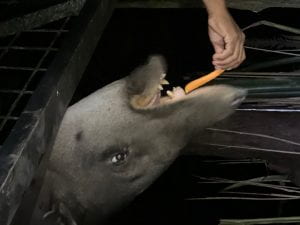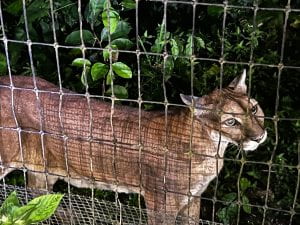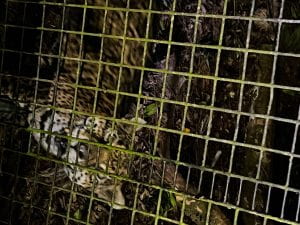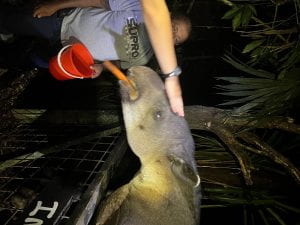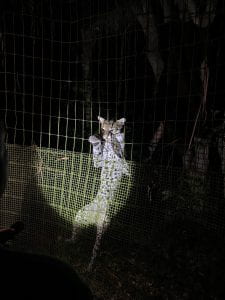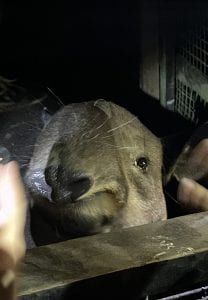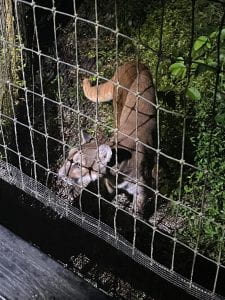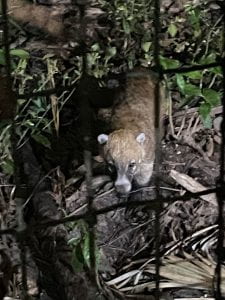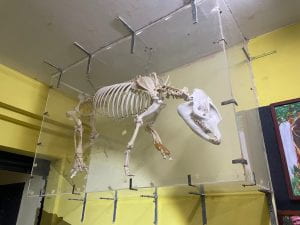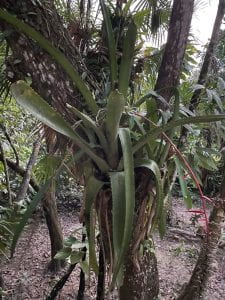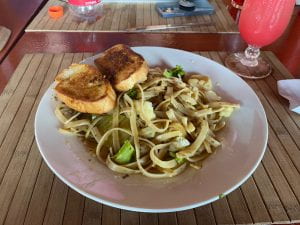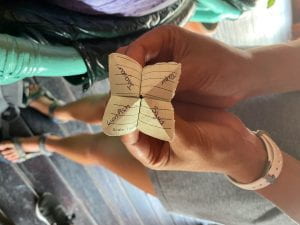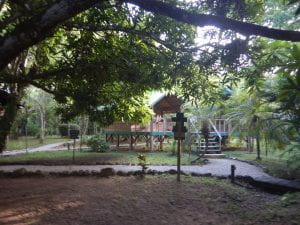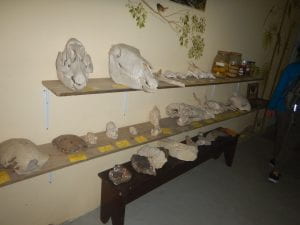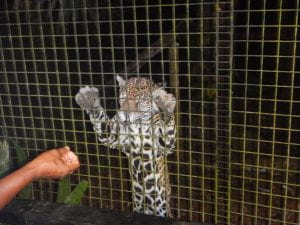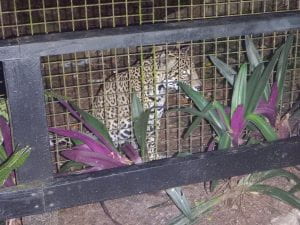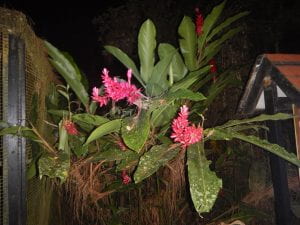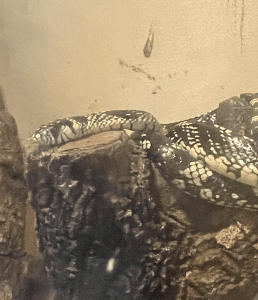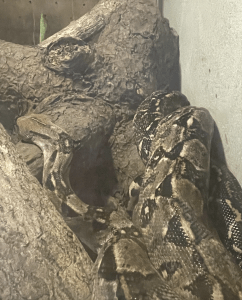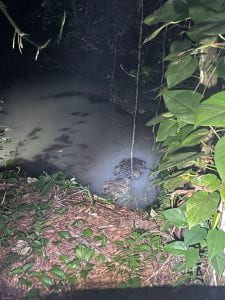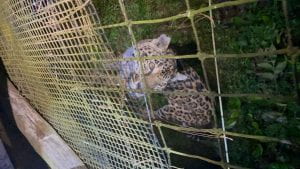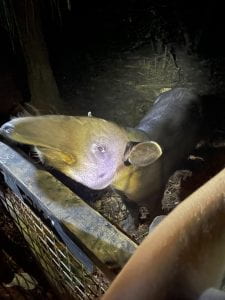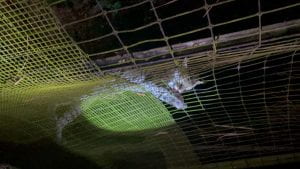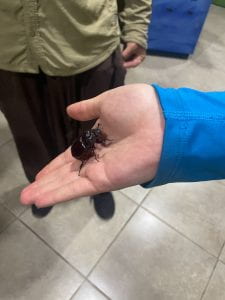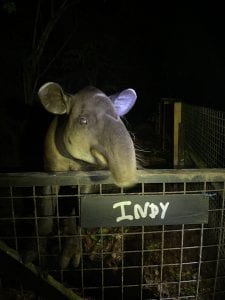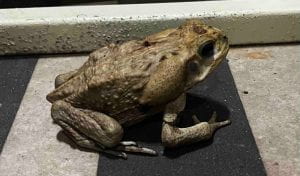Note: I will start including more taxon information about trees tomorrow! They’re certainly everywhere!!
Today we said farewell to Glover’s reef and Middle Caye, waving sayonara to our reef taxon for the rest of the trip. Bye mollusks! We had our last breakfast on island, some beans, sausage (honestly it may have been closer to a hot dog) and a tortilla and a mango. Sadly, I forgot to ask what type of mangos the baby mangos were so I could purchase them in the future.
After breakfast, we loaded our luggage back into the big boat that we came to the island on, and took a group photo with our water safety officers. It was here that we said goodbye to Ruth and Adrian, as only Cladius was accompanying us to Belize City. Dramamined up and ready to go, we boarded the boat to leave. But! One of the engines wasn’t working somehow, so two of the crew had to wack around in the engine department until they got it started, and we were off!
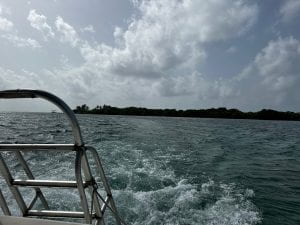
With a departure around 8:30, we arrived in the marina of Belize City around 12:40, ~4 hours later. I napped on the boat on the way there, as today was not a day about taxa but about travel.
Once at the dock, we unloaded everything and walked to the place where we started on the dock 7 days ago. We then loaded everything into 2 white vans that hold 10 people each.
After this, we had lunch at Calypso, the restaurant on the marina we came in on. I had the beef fajitas, but after seeing what everyone else got, I wished I had ordered pasta instead. They had fresh fruit juice, so I tried cantaloupe juice for the first time, and it was delicious and refreshing.
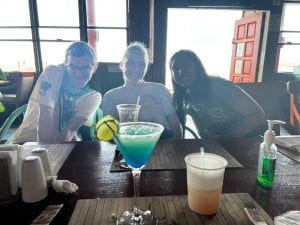
After leaving Calypso, we went to a local supermarket/pharmacy (pretty much a small version of H‑E‑B), where we stocked up on snacks and refilled supplies like bug spray and Tylenol.
After checkout, we headed to the Tropical education center near the Belize zoo, just outside of Belize City, where we would be staying the night. After getting settled into 2 person cabanas, we listened to a talk by Borris Aravalo about his research on the endangered north subspecies of the scarlet macaw and conservation.
Dinner was next, a traditional Belizean meal much like something that we ate at Glover’s. Then, the coolest part of the day: we got to have a night tour of the Belize zoo to see the nocturnal animals!
Even the 1 mile ride to the zoo was amazing, sitting in the back of a truck looking at the oh so dark night sky with wind blowing past us. But once we were there, it was awesome to see the creatures that many don’t get to see at the zoo because they aren’t usually out in the daytime (During Normal zoo hours). (See the pic of the Big Dipper I captured) 
We saw coatimundis and 3 species of owl, got to feed a white tailed deer a carrot, and got to feed a tapir, the national animal of Belize, a carrot as well. Tapirs are so much larger than I thought they were going to be, like a baby elephant or a super large dog. We also got to see 4 species of cat! 2 big, 2 “small” cats (but one of them (the puma) was a big cat classified as a small cat because of it’s ability to purr!) If it purrs, how is it not a friend??
On the topic of trees, the most recognizable tree that I saw the most of today was the Caribbean pine, Pinus caribaea. They’re characterized by very tall (~150 or greater) trunks with no branches or leaves until you reach the top, with needle like leaves.
At the tropical education center, we also saw a black poison wood, which was not a tree I knew I needed to be aware of! It’s important not to touch these.
And finally, at the zoo we saw a ceiba tree (Ceiba pentandra) which is one of the largest species of tree in the area!
Overall awesome place to stay!
